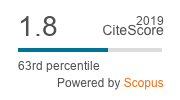Service quality in peacekeeping mission as a determinant of customer’s perceived value: Empirical evidence
Abstract
Purpose: Previous studies have been employing SERVQUAL by Parasuraman et al. (1985, 1988) to measure service quality in various service sectors due to its generic nature. Understanding the relationship between service quality and customer’s perceived value in non-business organizational settings is equally important with business setting as positive perception leads to favorable outcome. Hence, the aim of this study is to examine the relationship between service quality and perceived value.
Design/methodology/approach: The self-administered survey questionnaires were employed to gather data from Malaysian soldiers who involved in peacekeeping mission at a Middle Eastern country. The hypothesized model was analyzed using the SmartPLS 2.0.
Findings: The outcomes of SmartPLS path model confirmed that that all service quality dimensions namely tangible, responsiveness, reliability, assurance, empathy did act as important determinants of customer’s perceived value in the organizational sample.
Practical implications: The findings of this study may be used as guidelines by practitioners to formulate relevant and appropriate strategies in order to enhance quality of service delivery in agile organizations.
Originality/value: The work deals with service quality in non-business setting. Although the scale has been widely used, some modifications are generally needed in order to reflect specific characteristics of service sectors under study. The findings confirmed that in general SERVQUAL five dimensions are important determinants to the various service sectors.
Keywords
Full Text:
PDF[en]DOI: https://doi.org/10.3926/ic.428
This work is licensed under a Creative Commons Attribution 4.0 International License
Intangible Capital, 2004-2024
Online ISSN: 1697-9818; Print ISSN: 2014-3214; DL: B-33375-2004
Publisher: OmniaScience








